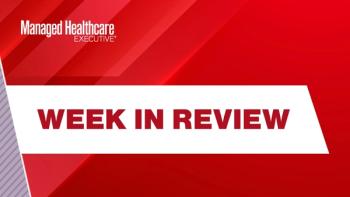
FDA adverse drug events app for public health crises could expand to more general adverse event reporting
Prompted by the 2009 H1N1 influenza outbreak, FDA has announced plans to create a mobile app that will help it gather information and send out alerts about adverse reactions to experimental medications prescribed during public health crises.
While FDA was handling the H1N1 influenza outbreak, it issued an emergency use authorization (EUA) for the investigational antiviral drug peramivir (BioCryst) intravenous in certain adult and pediatric patients with confirmed or suspected 2009 H1N1 influenza infection who were admitted to a hospital. The only way health workers could report adverse reactions to the drug (and receive FDA's daily communications) was through the current MedWatch system, which depends on desktop computer access.
"It is interesting to see FDA's recognition, and embrace, of the rapid expansion of new technology," Lori B. Leskin, partner and co-chair of the Product Liability group, at Kaye Scholer LLP, in New York, told Formulary. "This app-as described for now-is for use in public health emergencies. Smart phones clearly are the easiest technology to use; many doctors are already starting to use them in regular practice."
A LARGER ISSUE
"Although FDA discusses the issue in the context of a 'national crisis,' FDA is recognizing the difficulties and inefficiencies in the current reporting system," Leskin said. "These same issues are present in the non-emergency current adverse event reporting system. It is not a far leap to believe that if the app is seen as successful in 'crisis' situations, FDA could expand it to all adverse event reporting. At that point, it would be interesting to see how the FDA uses it: do they make it available to the general public or only to healthcare providers? What obligations would FDA impose on companies to monitor and follow up on these adverse events? Companies have certain obligations to collect, follow up, and report on adverse event reports received-no matter what the source."
As reporting becomes easier (ie, through a smart phone app as opposed through phone calls or online submission) and likely more broadly known, it would be expected that the number of adverse event reports would increase, Leskin explained. "Trying to keep up with the increasing number of adverse event reports would likely impose significant burdens on certain manufacturers," she said.
For now, Leskin noted, it is unclear what FDA intends to do with the data collected beyond dealing with the health crisis of the moment-although she asks rhetorically whether the information collected through the app might possibly be made public, or included as part of the review of a new drug application or label change application.
"The current discussion focuses on the need for FDA scientists to rapidly interpret information in a crisis-it does not discuss the need to share the data with others," she said. "But my guess is that formulary managers would like to see this project succeed and expand to more general adverse event reporting. Again, the difficulties with the current system identified here apply equally to the daily AER system."
Similar to FDA's limited social media guidelines released in January, this new app reflects an understanding by FDA of the power of evolving technology, she said. "Unlike the recently released draft guidance documents on social media in drugs and devices-which restricts to some degree manufacturers' use of social media to disseminate information, this app project looks to use social media affirmatively and increase and improve communications. But, as I mention, this project is likewise limited."
Newsletter
Get the latest industry news, event updates, and more from Managed healthcare Executive.

















































